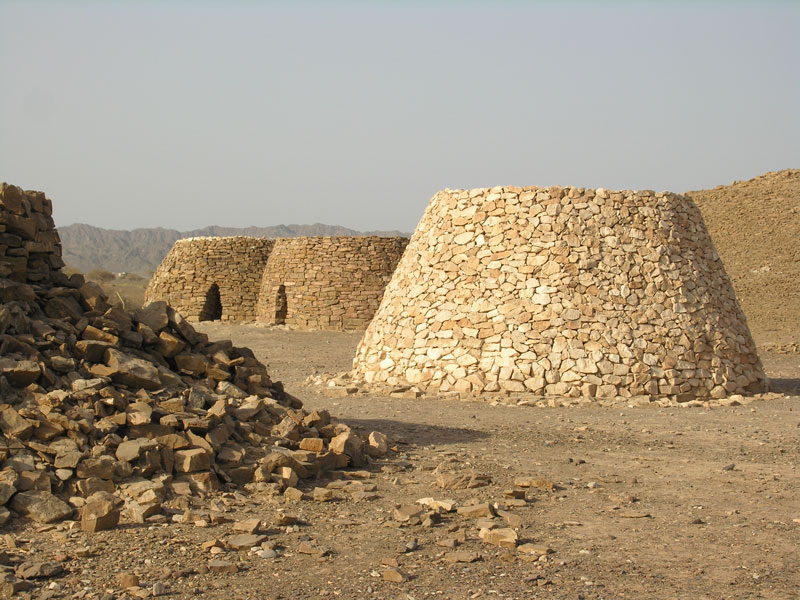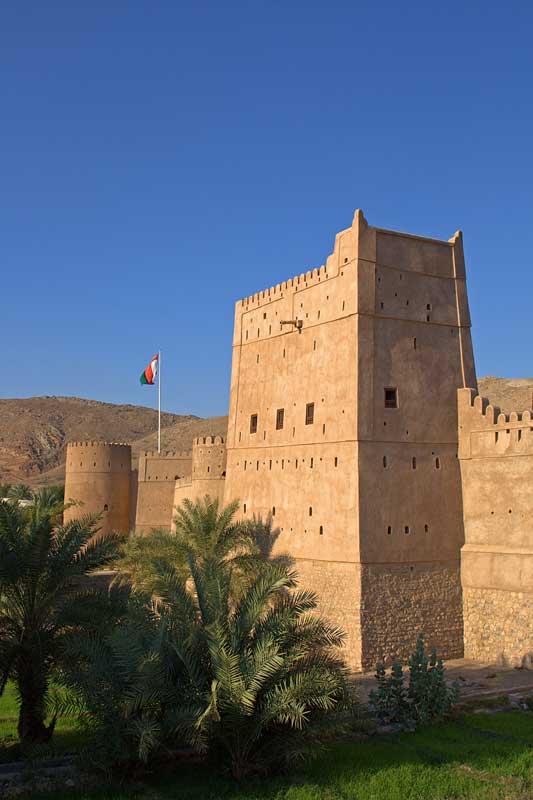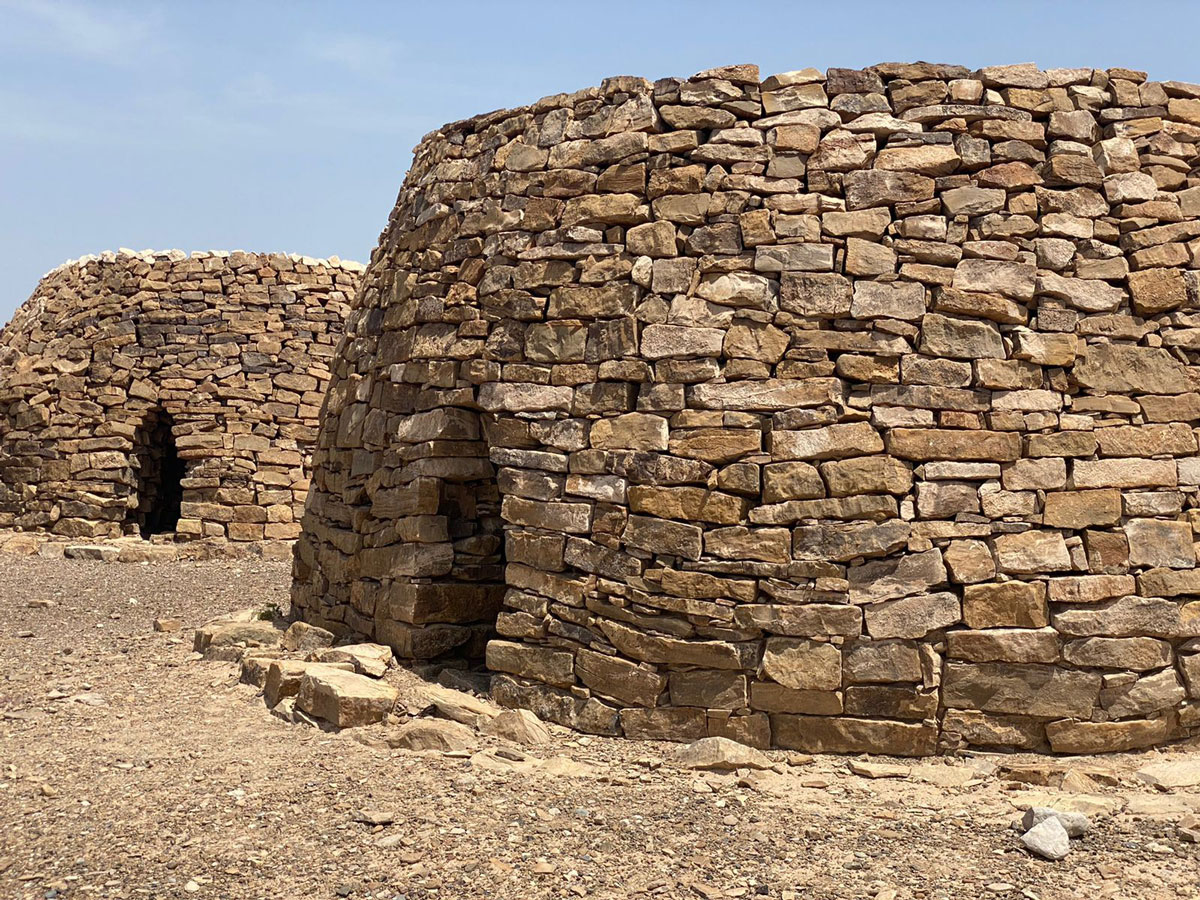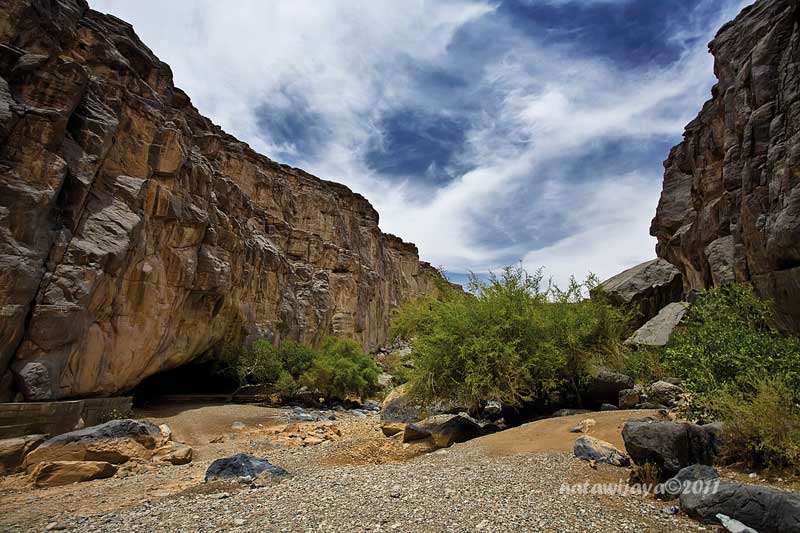The Governorate of Al dhahirah
The Governorate of
AlDhahirah

Descending from the southern slopes of the western end of the Al Hajar Mountains lies the Governorate of Al Dhahirah, which literally translates to ‘the back’. It forms a bridge between the trade routes of Oman and its neighbouring countries, UAE and Saudi Arabia, which is why the region is called Ibri, meaning ‘crossing’. Much of the area is covered by an enormous, semi-sandy plain, and the arid desert conditions mean that Al Dhahirah is sparsely populated. However, this governorate contains relics of the Sultanate’s history that are a treasure not to be missed.
Archaeology and history play a major role in this region, which extends all the way from the Al Hajar Mountains to the Empty Quarter known as Rub Al Khali.
The city of Ibri can be reached within a few hours from Muscat, and is home to the impressive Ibri Fort, with its ancient mosque and many different gates. The small village of Bat, east of Ibri, is home to a remarkable array of beehive tombs from the Bronze Age, listed as a UNESCO World Heritage Site since 1988.
Main Cities of Al Dhahirah Governorate:
IBRI • YANQUL • DHANQ
AL DHAHIRAH - SIGHTSEEING
Bayt Al Marah Castle

Beyond Ibri, to the north-west is Yanqul with the picturesque Bayt Al Marah Castle. The town is dominated by Jabal Hawra whose peak seems to change shape as you travel along the road below it. Surrounded with date Palm gardens and close to the remains of an abandoned mud village the fort will be a highlight of any visit to Al Dhahirah governorate. Dating from the 17th century AD, the walls surround an extensive range of buildings, including a traditional mosque. Inside the fort a large Tamarind Tree adds a beautiful patch of shade throughout the year.
Visiting Times:
Saturday- Thursday : 9:00 am – 3:00 pm
Friday : 8:00 am – 11:00 am .
Admission fees apply
The Bat Tombs

Together with the neighbouring sites of Al Khutum and Al Ayn, Bat forms the archaeological site of the world’s most complete collection of settlements and necropolises from the 3rd millennium BC. Located to the east of Ibri, the Bat site was crowned a UNESCO World Heritage Site in 1988. Bat is a collection of graves that look very much like beehives. Consisting of 150 graves, tombs and other structures dotted across a rugged plain, the remains of the most complete tombs are from the Hafit and Umm An Nor period (3200 – 2000 BC).
Timings: 24/7
Location: Bat, ask for directions in the village
Wadi Damm

Located near the charming little village of Al Ayn, Wadi Damm is a seasonal wadi that remains dry for most part of the year, but transforms into a magical oasis during rainfall. It is remarkable for its characteristic rocky formations sculpted by erosion. The wadi is distinguished by a variety of smooth rocks, out of which nature has formed beautiful water ponds. One of the rocky formations sculpted by erosion is a small cave near the water pool, which is a fine camping site for tourists.
Timings: 24/7 Location: 45km from Ibri
Tips: Make sure to reach the wadi only by four wheel drive, as the rugged terrain will not support salon cars.



